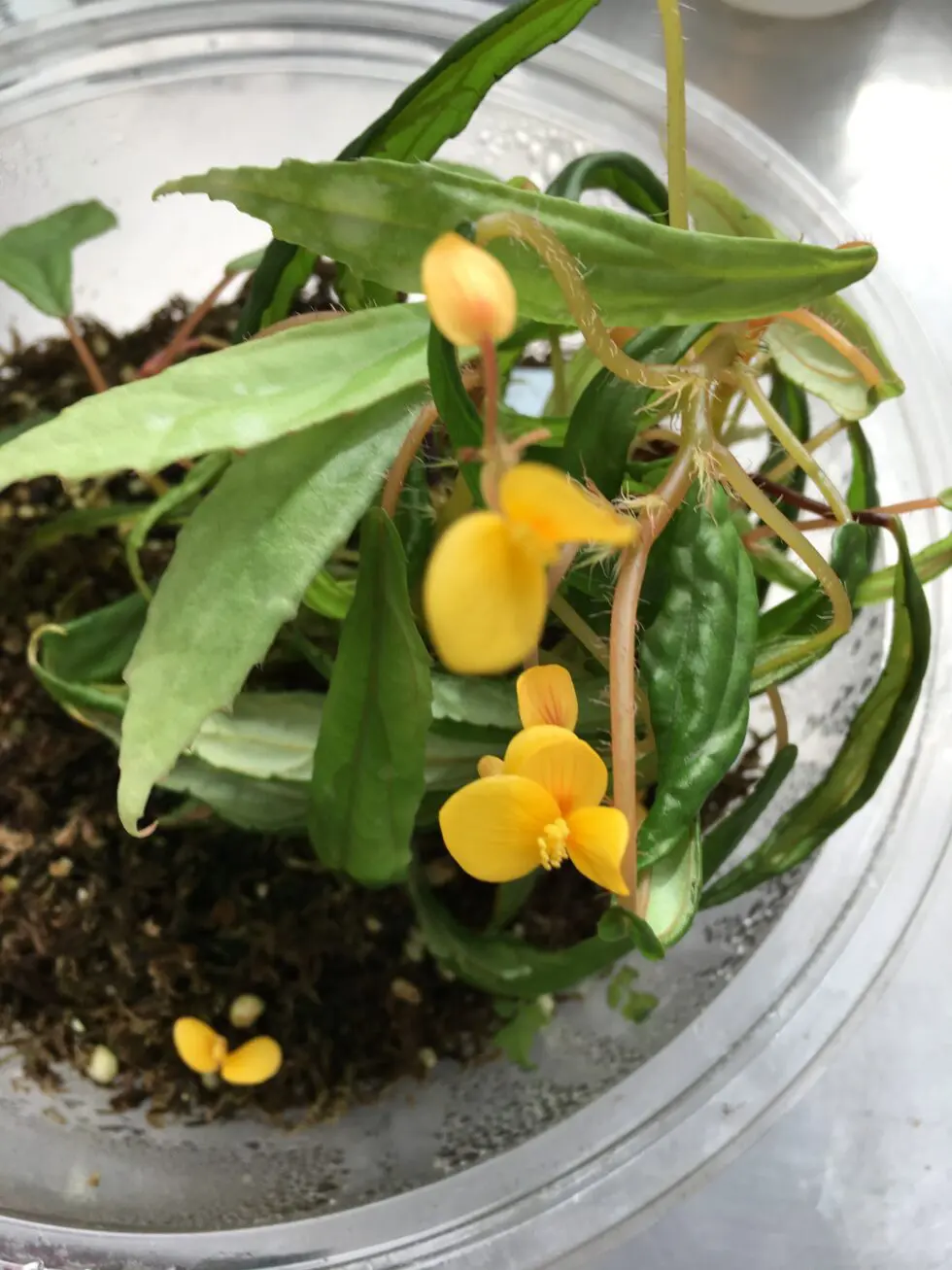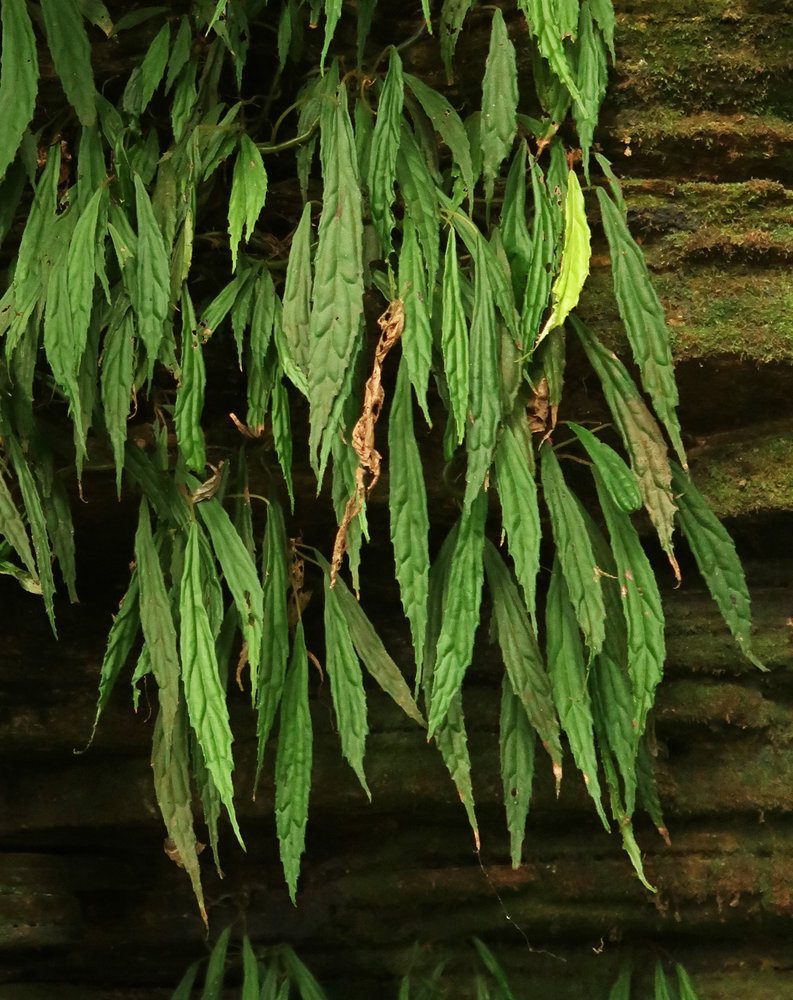B. montis-elephantis | Photo: Don Miller
MEMBER NAME: In Search of Small Things, Pacific Northwest
SPECIES NAME: Begonia montis-elephantis
An IUCN Red List Threatened Species, classified as Critically Endangered. Last accessed in 2011, an estimated 400-500 individual plants are living in Cameroon where it occurs. It does not occur in any protected areas, and faces habitat destruction from mining and quarry construction. It occurs in a limited distribution of 4 square kilometers on Mt. Elephant, which is mined for iron ore. It is found on wet rock faces in evergreen forest. (info paraphrased from iucnredlist.org)
[1] SHADE, SEMI-SHADE, SUN, TERRARIUM, FLUORESCENT LIGHTS
This is a terrarium species with semi-succulent leaves, that grows well on rock. I have mine under 1800 lumen LED lights and it flowers frequently, but in the past I’ve had it in lower light and it has done equally well. Terrarium has a small top vent taking up about 10% of the lid that allows for passive air exchange.
[2] TYPE OF GROWING MEDIUM USED
My mother plant is growing on a rock, which looks like granite but could easily be something else. The root base is covered in live moss which keeps the plant from drying out. Leaf cuttings have been rooted in various potting mixes including pro-mix, pro-mix with turface, and happy frog with turface and perlite. In the future I want to incorporate lime chips.
[3] TYPE OF FERTILIZER AND FREQUENCY OF FEEDING
None, but there are frogs in the terrarium which are likely providing it with fecal fertilizer regularly. Dead insects also may be utilized.
[4] MOISTURE REQUIREMENTS AND METHOD OF SUPPLYING APPROPRIATE AMOUNT OF WATER
This is not a Begonia that I have experimented with letting dry out at all in the few years I’ve had it due to its slow growth and difficulty of obtaining. It thrives in near 100% humidity and even did well when the tips of the roots were in contact with water for a period of months (seasonal flooding for the benefit of cohabiter frogs).
[5] PEST PROBLEMS AND HOW YOU TREATED THESE
No pests thus far.
[6] NOTE YOUR EXPERIENCE OF SETTING SEEDS AND GROWING SEEDS OF YOUR SPECIES
None, but this species flowers readily.
[7] NOTE YOUR EXPERIENCE OF VEGETATIVE PROPAGATION
Like some other African species, this one is incredibly slow to propagate with leaf cuttings! In my experience leaves will sit in germination media for at least 3-4 months before having any noticeable new growth. It takes 8 months or longer to have any leaves of mature size, and likely years to have a fully formed specimen. Leaves are durable, thankfully, and can be cut into sections of 2-4, 3 seems to be ideal, and the most efficient. A low percentage are lost, usually the piece containing the tip if any will be lost. The sections can be stuck directly into potting medium and kept around 75, with medium light. Higher light does not seem to be problematic, but sometimes the topmost part of the leaf will bronze if light is kept too high. This is not always bad though as it seems to discourage rot, which has plenty of opportunity to damage the plant during the very long germination period. That being said, the leaves are thick and generally very durable.
B. montis-elephantis | Photo: ©2021 Patrick Blanc



